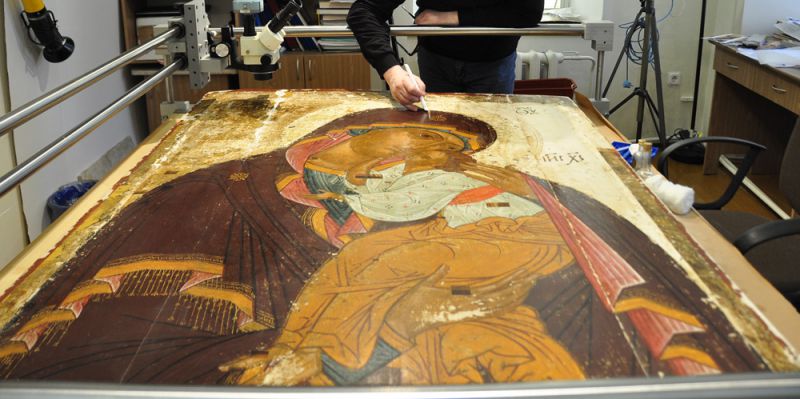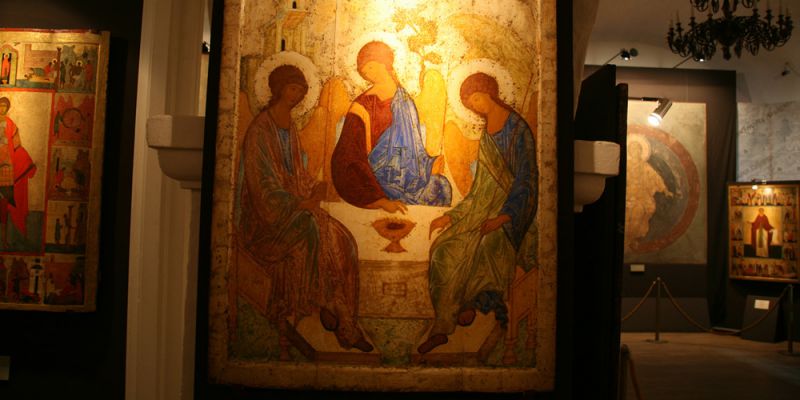Christian icons are imbued with profound symbolism and spiritual depth, inviting viewers to contemplate their intricate meanings. Our article with ukrburshtyn.com writers delves into the mysteries of iconography, shedding light on the artistic techniques and symbolic motifs employed in these sacred artworks.
Origins and Intentions of Divine Images:
Orthodox icons are revered as cultural treasures, distinct from Western art in their transcendent purpose. Rather than mere portraits, these images offer glimpses into the divine realm, guiding believers towards spiritual enlightenment. Icons served as accessible tools for conveying biblical narratives and theological concepts to an often illiterate audience, inviting contemplation and reflection.

Key Features of Orthodox Icons:
- Absence of Shadows: Icons depict a realm beyond the material world, devoid of earthly limitations. Artists eschew shading to emphasize clarity and spiritual essence.
- Halos: Radiant halos symbolize divine grace and holiness, enveloping figures in celestial light.
- Reverse Perspective: Icons employ a reverse perspective, drawing viewers into a transcendent realm where distant objects appear larger, evoking a sense of expansiveness.
- Ascension Motif: Figures in icons often seem to ascend, symbolizing detachment from worldly concerns and spiritual elevation.
- Symbolic Gilding: Gold leaf embellishments represent celestial radiance, transforming earthly space into a realm of heavenly glory.
Symbolism in Iconography:
Each detail in an icon carries profound significance:
- The Mamre Oak: Symbolizes rebirth and salvation, recalling biblical encounters with angels.
- The House/Temple: Emblematic of the universal Church and unity in faith.
- The Mountain: Evokes divine majesty and spiritual ascent.
- The Cave: Represents spiritual peril and the journey through darkness.
- The Ray: Signifies divine intervention and transformation.
- The Red Cross: Symbolizes martyrdom and spiritual renewal.
- The Eternal Circle: Represents eternity and the glory of Christ.

Color Symbolism in Icons:
Colors convey spiritual truths:
- White: Signifies purity, humility, and divine blessing.
- Gold: Represents divine presence, joy, and victory.
- Red: Symbolizes love, sacrifice, and the blood of martyrs.
- Blue: Evokes heavenly realms, wisdom, and eternal truths.
- Green: Symbolizes renewal, growth, and the cycle of life.
- Brown: Signifies mortality and the transience of earthly existence.
- Black: Represents darkness, evil, and the mystery of death.
Unlocking the Symbolism:
Icons serve as visual narratives, conveying timeless truths and spiritual insights. By unraveling the symbolism of icon painting, viewers can deepen their understanding of religious teachings and forge a profound connection with the divine.
Discover Iconic Artistry:
Explore a curated collection of authentic icons at our online store, "Yantar Polissya." Crafted with meticulous attention to tradition, these sacred artworks offer glimpses of divine beauty and spiritual enlightenment. Immerse yourself in the serene faces and elevated imagery, finding solace and inspiration in prayer.
 PakiFun- Useful stuff Free download Software
PakiFun- Useful stuff Free download Software